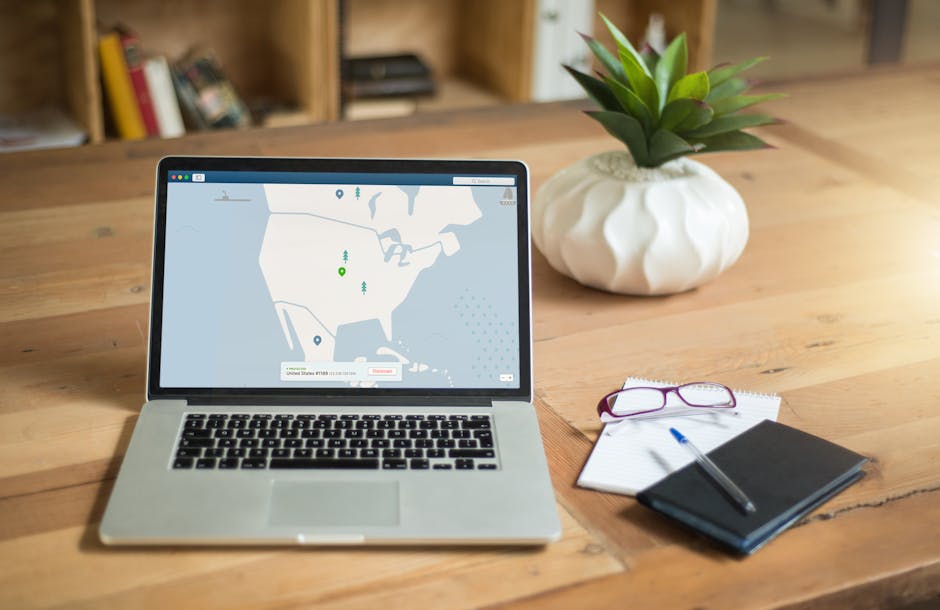Introduction to VPNs and Online Privacy
When hopping online, your privacy is more of a treasure than you might think. Imagine your personal information like a secret code that opens many locks in your life. You wouldn’t just hand that over to a sneaky stranger, right? That’s where VPNs, or Virtual Private Networks, swoop in like knights of the digital realm. Essentially, a VPN creates a private tunnel for your internet connection. It takes your data on a secret path, keeping it hidden from prying eyes like hackers or even your Internet Service Provider. It’s like slipping on a digital cloak of invisibility every time you go online. So, whether you’re fighting off nosy advertisers or safeguarding your sensitive info, VPNs are the trusty tools you reach for to keep your online life secure and private. Trust me, in this game of digital hide and seek, a VPN makes sure you stay hidden.

Understanding How VPNs Work
VPNs create a private network from a public internet connection, essentially giving you a personal tunnel through the web. Imagine your internet activity as a mail delivery system. Without a VPN, it’s like sending postcards. Anyone who handles them can see your messages. But with a VPN, you’re sending letters in secure envelopes. Only the sender and the receiver—the VPN server—can see what’s inside. It masks your IP address, so your online actions are virtually untraceable. More importantly, it establishes secure and encrypted connections to provide greater privacy than even a secured Wi-Fi hotspot.
Reasons to Use a VPN for Internet Security
When you surf the web, there’s a lot of snooping that can happen. Hackers, government agencies, and even your internet service provider can see what you’re doing. That’s where a VPN comes into play. It’s like throwing on a cloak of invisibility – suddenly, your online movements become a private affair. Think of it as a secret passageway that keeps your internet activities hidden from prying eyes. Here’s the deal: A VPN encrypts your internet connection, which means all the data you send and receive is scrambled up. Even if someone manages to intercept it, it’s all gibberish to them. Moreover, it hides your location by bouncing your connection through servers around the world. So you can access content that’s blocked in your area and browse anonymously. Bottom line, using a VPN is about taking control of your online privacy and not letting anyone intrude on your digital life.
Selecting the Right VPN Provider
When you’re on the hunt for a VPN provider, think durability, not just flash. Look for one with a fortress of privacy policies, a clear stance on logging your data, and customer service that won’t leave you stranded. Speed is crucial, so make sure you’re not trading a fast connection for a leaky one. Cost matters, but cheap can often mean flimsy defenses. Check how many devices you can use because even Spartans need protection on all fronts. Trust in reviews and recommendations but verify with your own sharp research. Remember, a reliable VPN provider is your shield in the vast digital battlefields. Choose wisely, protect fiercely.
Step-by-Step VPN Setup Guide
Setting up a VPN doesn’t have to be daunting. Just follow these simple steps and you’ll be on your way to enhanced online privacy. First, pick a reliable VPN provider based on your needs, like speed or location variety. Download and install the software they provide. Next, log in using the credentials you created when you signed up. Choose a server location; if you want content from a certain country, select a server there. Finally, hit the connect button. Your internet connection is now encrypted and your online identity is more secure. Remember to disconnect the VPN when you’re done for the day. It’s as straightforward as that!
Configuring Your Device for VPN Use
First off, you’ll need to choose a VPN service. Find one that suits your needs and sticks to its guns when it comes to privacy and security. Once you do, subscribe to it. Most services are straightforward and will guide you through the setup process. Download their app onto your device—whether it’s a smartphone, tablet, or computer.
Now, open the app and log in with the credentials you set up when you subscribed. The app will probably have a big button saying “connect” or something similar. Hit it, and boom, you’re connected to a VPN server. What does this mean for you? Your internet traffic now takes a detour through this server, making your online moves much harder to track.
Some apps let you choose the location of the server you’re connecting to. Want to appear like you’re browsing from the other side of the world? Go for it. Just remember, closer servers often mean faster speeds, so don’t wander too far unless you need to.
If you’re feeling tech-savvy, you can mess with advanced settings like choosing the protocol—this dictates how your data travels to the VPN server. Don’t worry if that sounds like gobbledygook; the default settings are usually good for most folks.
Remember, a running VPN can mean a slower connection. Keep an eye on your speeds, especially if you’re doing something data-heavy like streaming movies. If things get too sluggish, try switching to a different server or dropping a message to your VPN’s support team. They’re usually on the ball and can help you iron out the kinks.
And that’s the gist of it. Configuring your device for VPN use isn’t rocket science. Follow these steps, and you’ll step up your online privacy game in no time.
Testing Your VPN Connection
Once you’ve got your VPN up and running, it’s crucial to check that it’s working properly. You’re aiming for a secure shield, so let’s make sure there are no chinks in the armor. Start by visiting a website that shows your current IP address. Take note of the IP displayed – that’s your public face to the digital world. Next, activate your VPN and connect to a server of your choice. Refresh the IP address page. It should now show a different IP address, one that corresponds to the VPN server’s location, not your actual one. If it does, you’re cloaked in privacy. If it doesn’t, your VPN might be a dud. Another smart move is to test for DNS leaks — these can betray your real location. Use a DNS leak test website, and if it reveals your true ISP, your VPN may be leaking. Good VPNs include built-in leak protection. Don’t forget, consistent testing is the way to ensure your VPN remains a trusted tool in your online security arsenal.
Tips for Maintaining VPN Security and Performance
Keeping your VPN secure and humming along requires some upkeep. First off, always keep it updated. Software updates patch up security holes that could let hackers sneak in. Then, use strong passwords, the kind that mix up letters, numbers, and symbols—it’s like setting a hefty padlock on your personal data. Make sure to choose the right VPN protocol, too. Options like OpenVPN or WireGuard provide both top-notch security and speed. And don’t just stick to one server, spread out your connections. This can dodge bottlenecks and snoops. Remember to check your VPN’s security features, such as a kill switch, which cuts your internet if the VPN drops, keeping your data from getting exposed. Finally, watch your network’s performance. If your VPN slows your browsing down to a crawl, try another server or protocol to pick the pace back up. It never hurts to do a bit of tidying now and then to keep your digital life neat and secure.
Common VPN Setup Troubleshooting
Sometimes, even when you follow the setup guide, your VPN might act up. Don’t sweat it; this is common and typically easy to fix. First, if you’re having trouble connecting, double-check your internet connection. If that’s steady as a rock, move on to checking your VPN login credentials – one simple typo and it’s a no-go.
Next, peek at your firewall or antivirus settings. These guardians of your device can sometimes mistake the VPN for an uninvited guest and block its access, so you might need to tweak the settings. Make sure the VPN app is updated. Like old gym gear, outdated apps just don’t work as well. If you’re in a different country, your VPN might also be playing hard to get due to geo-restrictions – a different server might just be the ticket.
And remember, the support team for your VPN is there to have your back. They’re like your personal tech squad, so reach out if these quick fixes don’t cut it. Just trying these steps can solve many common VPN hiccups. Keep it simple, and you’ll be surfing securely in no time.
Conclusion: Ensuring Your Online Privacy
Wrapping up, keeping your online privacy is no joke, and with a VPN, you’ve taken a brave step in the right direction. You’ve seen how a VPN can serve as a digital armor, shielding you from prying eyes, be it hackers or overly curious internet providers. Remember, a decent VPN doesn’t have to drain your coin purse dry but pick one that’s reputable and reliable. Stay vigilant, as the cyber world is full of unforeseen hazards. Keep your software updated, and your wits about you, and your online presence will be as close to impregnable as it gets. Stay safe out there, savvy internet traveler.







